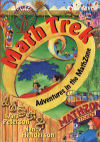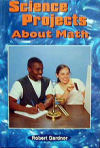Math of the World Additional Information
Ron Eglash has a home page at www.rpi.edu/~eglash/eglash.htm (Rensselaer Polytechnic Institute). His computer programs (design tools) are available at www.rpi.edu/~eglash/csdt.html (Rensselaer Polytechnic Institute). Additional information about Eglash’s approach to teaching math can be found at www.eurekalert.org/pub_releases/2006-06/rpi-mlg062306.php (Rensselaer Polytechnic Institute).
To learn more about fractals, go to math.rice.edu/~lanius/frac/(Rice University).
Peterson, Ivars. 2003. Geometreks. Science News Online (Nov. 8). Available at http://www.sciencenews.org/articles/20031108/mathtrek.asp.
______. 2001. Sand drawings and mirror curves. Science News Online (Sept. 22). Available at http://www.sciencenews.org/articles/20010922/mathtrek.asp.
______. 1999. Geometry out of Africa. Science News Online (Nov. 27). Available at http://www.sciencenews.org/pages/sn_arc99/11_27_99/mathland.htm.
For additional articles about math in everyday life, see MatheMUSEments at http://www.sciencenewsforkids.org/pages/puzzlezone/math.asp.
Books recommended by SearchIt!Science:
 |
Math Trek: Adventures in the MathZone — Ivars Peterson and Nancy Henderson
Published by Wiley, 2000
There’s a new amusement park in town. Come on in and find out how you can have fun with math in everyday life. Sample interesting and unique projects, from untangling knots to winning games with weird dice to figuring out secret codes. Wander through the fractal forest, take a ride on the Möbius strip roller coaster, and get dizzy learning about how math makes the Tilt-A-Whirl possible. The more activities you try, the more you’ll learn how cool it can be to see the world through the eyes of a mathematician. Every trip to the MathZone is an exciting adventure. |
 |
Science Projects About Math— Robert Gardner
Published by Enslow Publishers, 1999.
This book contains experiments that involve math. It is packed with dozens of experiments and activities that you can perform yourself. Each one includes an introduction to the subject, step-by-step instructions, safety hints, a list of scientific-equipment suppliers, and an index. Gardner also marks the experiments that he thinks would make good science fair projects. Experiments include “Predicting World Population,” “Running Bases versus Straight-Line Dashes,” “Bouncing Balls,” and “Curveballs: Ratios and Proportions.” |
Power Words
algorithm A group of rules or procedures for solving a problem in a series of steps. Algorithms are used in mathematics and in computer programs for figuring out solutions.
Cartesian coordinate system A system in mathematics that is used to locate a point in a plane. The point is identified by two numbers that represent the distance from each of two perpendicular lines that cross each other at a point called the
origin. The lines are called the x-axis and the y-axis.
denominator The number below or to the right of the line in a fraction. The denominator shows the number of equal parts that one while is divided into. In the fraction 2/7, 7 is the denominator.
fractal A figure or pattern that appears again and again inside a larger pattern that is exactly like it. The patterns in snowflakes are fractals.
geometry The study of points, lines, planes, surfaces, angles, and solids. Geometry is a branch of mathematics.
symmetry An exact matching of parts on opposite sides of a dividing line or around a central point.
Copyright © 2002, 2003 Houghton-Mifflin Company. All rights reserved. Used with permission.
